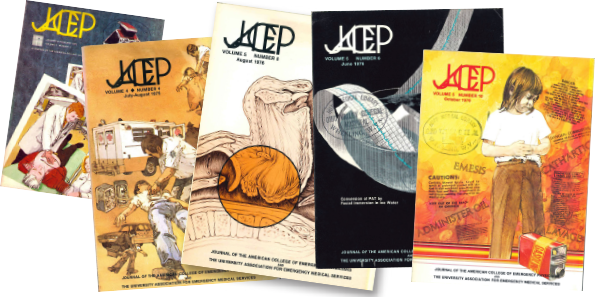
What we’ve accomplished in the first 50 years begs the question, how will emergency medical care look 50 years from now? A bright future is illuminated by knowledge of the past. As part of the celebration of our specialty’s 50th anniversary, ACEP Now will provide a series of articles discussing the timeline of many critical aspects of emergency medicine.
Explore This Issue
ACEP Now: Vol 37 – No 02 – February 2018What seems commonplace today may not have been so clear back then, and many stops along the way have proved ineffective or even harmful, but it’s all part of the evolution of emergency medicine. What milestones were reached? Who was involved? Dead ends? Plenty of those. Today’s emergency physician has to ask, how could they practice back then? Many from that era might say the same about today’s emergency medicine.
We intend to cover topics such as stroke, acute coronary syndrome, trauma care, resuscitation, toxicology, infectious disease, airway management, and many more. Illustrating the issues of the times is a compilation of covers and advertisements from the Journal of the American College of Emergency Physicians (JACEP), now known as the Annals of Emergency Medicine.
Stroke: In the 1960s, hypertension was identified as a risk factor for stroke, and in the 1970s, aspirin made a big splash along with the advent of the CT scanner.
Trauma: Although the concept of pneumatic anti-shock garments was introduced in 1903, NASA claimed credit for the development of medical anti-shock trousers (MAST) in the 1960s. MAST entered the medical scene during the Vietnam War and were deemed essential for all ambulances to carry by the American College of Surgeons Committee on Trauma in 1977.
Sepsis: Lactate was first introduced in 1964? What took knowledge translation so long? In 1954, corticosteroids emerged as a treatment option for severe infections, and it took the next 50-plus years to prove that they didn’t work.
Toxicology: In the late 1970s and early 1980s, ipecac was all the rage! Home? Hospital? It didn’t matter—give it! It’s hard to imagine the sheer volume of emesis that must have been produced until this approach to gastric decontamination fell out of favor due to aspiration, Mallory-Weiss tears, bronchospasm, pneumomediastinum, and other complications.
Acute Coronary Syndrome: In the early 1970s, the World Health Organization defined a myocardial infarction as any two of the following three: 1) chest pain, 2) development of Q waves on an ECG, and 3) increase in cardiac enzymes (combination of total creatine phosphokinase, creatine phosphokinase-MB, aspartate aminotransferase, and lactate dehydrogenase).
Pages: 1 2 | Single Page




No Responses to “ACEP Now Celebrates 50 Years of Emergency Medical Care”